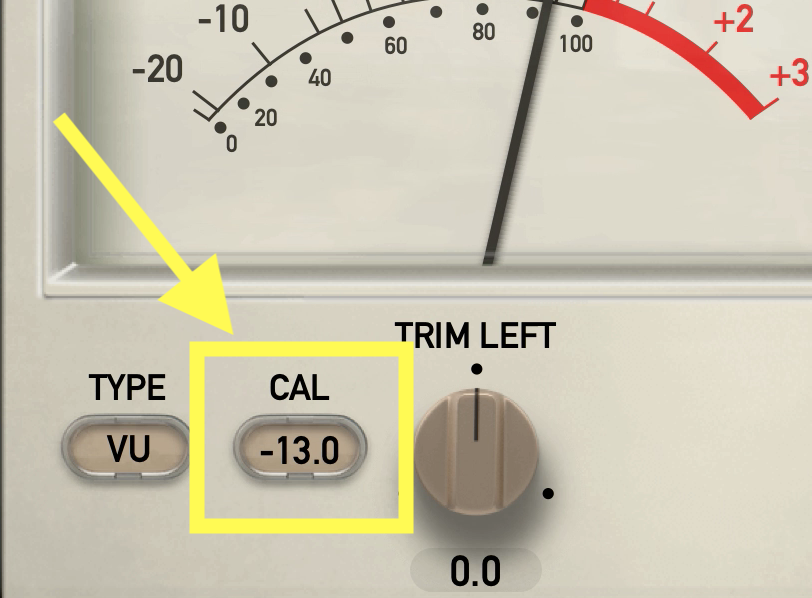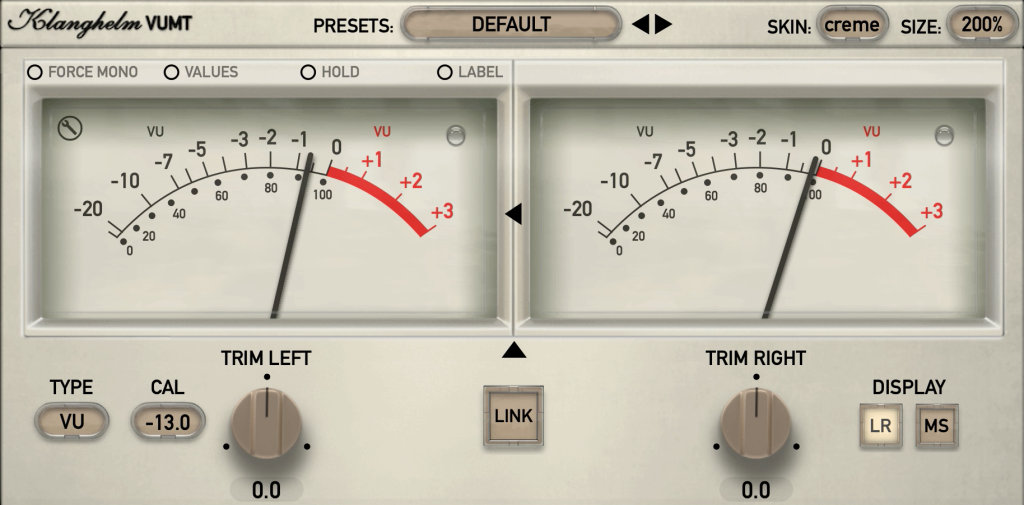Using a VU metering plugin can sometimes be helpful when mastering, despite it being such an old and outdated way of measuring loudness. The LUFS meter is generally more useful for measuring loudness, but the VU meter can provide some basic visual information about dynamics and tonal balance.
Note that all “VU meters” are not actual VU meters. Some are just simple RMS meters with a VU scale. To be actually useful for mastering I would use something that follows the old VU standard and have similar characteristic. One example is the VUMT plugin from Klanghelm.
Here are three tips for using the VU meter when mastering.
1. Calibrate 0 VU

There is no standard for how to calibrate a VU meter in the digital domain. I usually set it to either -8 dBFS, -10 dBFS or sometimes below that, depending on how loud the record I’m currently mastering is. As a rule of thumb I will set 0 VU to approximately the same level as the integrated LUFS value of the current master.
2. Check the tonal balance
The VU meter doesn’t do any filtering of the signal before measuring, so lower frequencies will generally measure louder than they sound. If you have set 0 VU to the average loudness as described above then a bass heavy master will usually measure above 0 VU, and a thinner master measure below 0 VU.
This is a very crude and inexact way of gauging the tonal balance, but it can help you spot mistakes. For example, very low sub-bass sounds can be more or less inaudible, but might peg the VU meter into the red.
3. Look for wide swings
Dynamic sounds will create larger swings on the VU meter. Sometimes there are overly dynamic things happening in a master that are caused by resonances or build-ups. This is especially true in the lower mids or in the bass. So if you see wide swings on the VU meter when certain notes are heard, then you likely have a resonance around that note.
Conclusion
So, these are three tips on how to use a VU meter for mastering. We have also made a video about different types of level meters that are often used in mastering. Watch it below:


Always very helpful thanks
Great Information, Thanks for sharing.